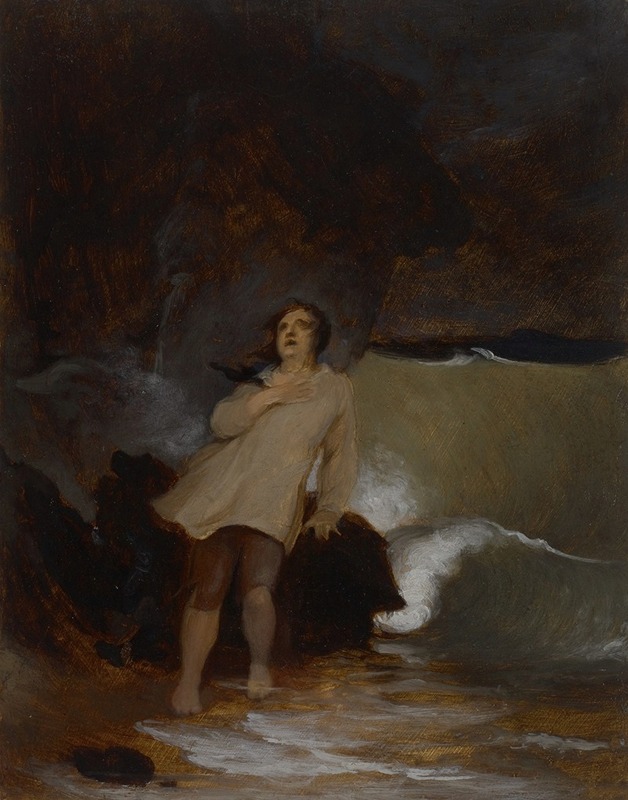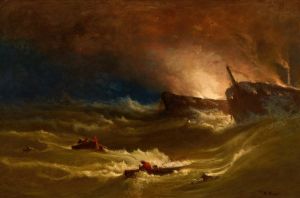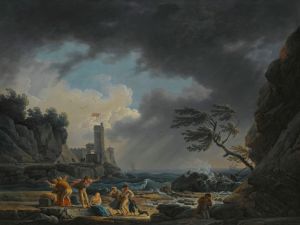
The Shipwreck of Robinson Crusoe
A hand-painted replica of Thomas Sully’s masterpiece The Shipwreck of Robinson Crusoe, meticulously crafted by professional artists to capture the true essence of the original. Each piece is created with museum-quality canvas and rare mineral pigments, carefully painted by experienced artists with delicate brushstrokes and rich, layered colors to perfectly recreate the texture of the original artwork. Unlike machine-printed reproductions, this hand-painted version brings the painting to life, infused with the artist’s emotions and skill in every stroke. Whether for personal collection or home decoration, it instantly elevates the artistic atmosphere of any space.
Thomas Sully's painting "The Shipwreck of Robinson Crusoe" is an evocative work that captures a dramatic moment from Daniel Defoe's classic novel "Robinson Crusoe," first published in 1719. Sully, an American artist known for his portraits and historical scenes, created this painting in the early 19th century, a period when the novel's themes of adventure and survival were particularly resonant with audiences.
The painting depicts the aftermath of a shipwreck, a pivotal event in the novel that leaves the protagonist, Robinson Crusoe, stranded on a deserted island. Sully's interpretation focuses on the emotional and physical turmoil of Crusoe's predicament. The composition is dynamic, with Crusoe portrayed amidst the wreckage, emphasizing his isolation and the overwhelming power of nature. The use of light and shadow in the painting highlights Crusoe's vulnerability and the desolation of his surroundings.
Sully's work is characterized by its attention to detail and the ability to convey narrative through visual elements. In "The Shipwreck of Robinson Crusoe," he employs a realistic style that captures the textures of the sea and the debris, as well as the expressions of determination and despair on Crusoe's face. This realism helps to immerse the viewer in the scene, making the story of survival and resilience more immediate and impactful.
The painting reflects the Romantic era's fascination with nature's sublime and the individual's struggle against it. During this period, artists and writers were drawn to themes of exploration, the unknown, and the power of the natural world. Sully's choice to depict this moment from Defoe's novel aligns with these interests, as Crusoe's story is one of human endurance and ingenuity in the face of adversity.
Thomas Sully was born in England in 1783 and emigrated to the United States with his family in 1792. He became one of America's leading portrait painters, known for his elegant style and ability to capture the character of his subjects. While he is primarily celebrated for his portraits, Sully also created historical and literary-themed works, such as "The Shipwreck of Robinson Crusoe," which demonstrate his versatility and narrative skill.
The painting is part of a broader tradition of artistic interpretations of literary works, where artists bring to life scenes from novels and plays, offering new perspectives and insights into familiar stories. Sully's work contributes to this tradition by providing a visual representation of Crusoe's ordeal, inviting viewers to engage with the narrative in a different medium.
Today, "The Shipwreck of Robinson Crusoe" is appreciated not only for its artistic merit but also for its historical significance as a reflection of early 19th-century American art and its engagement with popular literature. The painting serves as a testament to Sully's talent and his ability to capture the human experience through art.


















